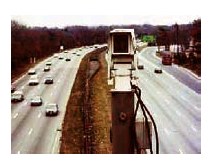
Lessons learned from prior experience with disasters and other types of incidents are the basis for a concept of operations that captures a recommended or ideal system for communicating with the public using ATIS during disasters. The concept of operations provides an overview of the various stakeholders, their roles and responsibilities, the type of information exchanged between them, operational needs and requirements, and system overview for agencies to apply their ATIS assets to inform the public during disasters. This section summarizes a previously published document on the topic (http://ntl.bts.gov/lib/jpodocs/repts_te/14262.htm).
An ideal ATIS system and disaster information mechanism requires systems, devices, and all activities and players to communicate and coordinate their actions and messages to make the system the best it can be. This ATIS disaster system includes functions of three subsystems: transportation system operations, emergency management and operations, and traveler information. The functions performed can be categorized into three main components:
- Agencies/organizations that gather, operate, and provide the information
- Structure/timeline of activities at the onset, during, and after the disaster
- Dissemination mechanisms/delivery of information.
Agencies/Organizations
Typically when a disaster occurs, public agencies are the first organizations to be involved in some form. The agencies vary from state, local, and sometimes federal based on the extent and nature of the disaster. The nature and size of the disaster also affect the level of involvement, type of agency, and the size of agencies that are part of a disaster response, including the provision of information to the public. Another fact to note is that most of the ATIS assets in the United States are currently owned and operated by public agencies, although the private sector role is growing, especially in the dissemination component. Typical agencies that need to be involved during a disaster include:
- Transportation Agencies – These range from State DOTs or regional transportation operations entities, which typically control the ATIS assets in a given region, to public works departments of county and city governments. These agencies are responsible for the road and transit network and the assets on these networks. Their roles during a disaster can vary from being an early responder to the event, through supporting the lead agency or incident commander, to managing post-event transportation and possibly the return of an evacuated population. The DOT operations staff communicates with their public information officers and the media to ensure that appropriate information is being disseminated to the public. The DOT tends to be an active participant during a disaster due to the fact that they are responsible for constantly maintaining, updating, and providing information to the traveling public on road and transit conditions relative to the disaster.

- Public Safety Agencies – For any major incident or disaster that occurs, public safety agencies (law enforcement, fire and rescue) take the prime response role at the disaster site. An incident commander is established and that person is responsible for all aspects of the incident response. The Unified Command Structure (UCS) is a recognized and accepted organizational variation on the incident command structure (ICS) that is appropriate for handling large scale incidents and disasters that involve multiple agencies. The purpose and the structure of the UCS is to allow more than one agency or jurisdiction to participate in the incident command to better apply assets and authorities of the different agencies. The primary function of incident command is to assess the situational status and provide leadership for decisions that have to be made about appropriate response operations. Since the incident commander has the most accurate and current information, related to response activities and outcomes, other agencies as well as the media expect the ICS to include a function for providing information to them.
 Emergency Management Agencies (EMA) – The primary function of an EMA is to provide emergency planning and preparedness for its jurisdiction between emergencies and to coordinate the provision of resources for the support of emergency response operations during major emergencies or disasters. EMAs typically maintain an emergency operations center (EOC) that can be activated in the event of a major emergency or disaster to facilitate integration of information from agencies in order to provide an overview of the event consequences and emergency response operations, and to activate a joint information center (JIC) for coordinating the development of integrated news releases. If it appears that the consequences of a disaster will overwhelm the ability of the jurisdiction to respond and recover, the jurisdiction's emergency manager provides the assessment of the situation that will be the basis for the declaration of an emergency in order to obtain resources through the vertical hierarchy of local, state, and federal emergency management systems.
Emergency Management Agencies (EMA) – The primary function of an EMA is to provide emergency planning and preparedness for its jurisdiction between emergencies and to coordinate the provision of resources for the support of emergency response operations during major emergencies or disasters. EMAs typically maintain an emergency operations center (EOC) that can be activated in the event of a major emergency or disaster to facilitate integration of information from agencies in order to provide an overview of the event consequences and emergency response operations, and to activate a joint information center (JIC) for coordinating the development of integrated news releases. If it appears that the consequences of a disaster will overwhelm the ability of the jurisdiction to respond and recover, the jurisdiction's emergency manager provides the assessment of the situation that will be the basis for the declaration of an emergency in order to obtain resources through the vertical hierarchy of local, state, and federal emergency management systems.- Federal Agencies – Based on the scale and nature of the disaster, one or more federal agencies may be involved. These include but are not limited to the Department of Homeland Security (DHS) and its Federal Emergency Management Agency (FEMA), and, when a criminal act is suspected, the Department of Justice, which includes the Federal Bureau of Investigation (FBI). These agencies tend to play a coordinating or investigative role after the disaster has taken place, and after local and state agencies' initial response to the event.
- Private Sector Providers – Although a majority of ATIS assets are owned by public agencies, most widely used by travelers are commercial radio and TV. Examples of other privately owned ATIS assets are commercial websites and satellite radio. Information used by private providers can come from both public and private sources. Traffic reporters for TV and radio stations are sometimes co-located at the DOT's TMC and can be an integral part of the agency's overall approach to information dissemination.
Timeline of Events
When a disaster occurs, the personnel of the various agencies shift into their respective roles and responsibilities outlined in their emergency plans and procedures for assessment, response, and then recovery. As discussed above, multiple organizations perform multiple roles at different times during a disaster. As the condition of the transportation system changes due to the response and recovery operations, the information needs of travelers will change accordingly.

Figure 4-1. Process for Traveler Information Dissemination During Disasters
| Early Detection/Notification | During the Event | Recovery |
|---|---|---|
|
|
|
The ideal sequence of processes for providing information that meets travelers' needs is as follows:
- The compilation of assessments of the condition of the transportation system from persons engaged in response operations in the field
- The distillation of these assessments into messages that are key to ensuring traveler safety and mobility despite circumstances created by the disaster event
- The dissemination of messages to the traveling public.
Figure 4-1 highlights these three main processes and the agencies, operations, and type of information that flows and is disseminated during a disaster. The information flows depicted in this figure are intended to illustrate the full range of information that is generated and communicated to the public throughout a disaster situation. It should be noted that elements of timing and dependency relationships come into play as a disaster unfolds, as players enter or exit the picture and as situational knowledge evolves. This flow of information involves a feedback loop, in that the adjustments travelers make in reaction to the information they receive about the status of the transportation system can alter the situation by, for example, creating a surge of traffic onto an alternate route or reducing the congestion created by damage or danger affecting the highway. Table 4-1 further expands upon the aspect of timing according to three disaster stages: early detection and notification, during the event, and recovery after the event. The situation in the earliest stages is characterized by uncertainty and incomplete information. As the disaster proceeds, the situation becomes clearer with respect to the degree of disruption to the transportation system, and the information to the public can be coordinated more effectively. Finally, in the recovery stage, the urgency has passed; nonetheless, the public continues to need information about continued disruption along some routes or the recovery of routes for use.
Dissemination Mechanisms
In many parts of the U.S., ATIS has become such a regular part of travel, especially for commuters, that it is now often considered a necessary source of information. The types of ATIS systems, their capabilities, and the technologies available have grown and matured considerably over the past few years. Common types of ATIS dissemination mechanisms include:
- Variable Message Signs (VMS)
- Telephone (landline or cell) including 511
- Highway Advisory Radio (HAR)
- Websites
- Personal handheld devices
- E-mail alerts
- Commercial radio and TV – the media
- Satellite radio.
VMS are among the ATIS devices used by public agencies. Both the fixed and portable signs can be used to inform motorists on travel conditions, road closures, and alternate routes; and the signs can be programmed remotely to change the message “dynamically” as conditions change. Portable signs also enable transportation agencies to inform travelers outside the disaster area or in rural areas where fixed VMS are not available. VMS are most useful when the message is concise, allowing the traveler to read it while in motion.
While many DOTs have operated toll-free telephone numbers for road conditions for several years, 511 systems are rapidly replacing them. Automated 511 systems, either statewide or regional, can provide commuter information, road weather conditions, amber alerts, and information on other major events. VMS can direct travelers to dial 511 where more extensive information is available. Accessible pre-trip from landlines or while en-route from cell phones, 511 bridges the gap between information available in urban and rural areas. There are currently twenty-nine 511 systems deployed in the United States.
HAR is another technology available to transportation agencies to provide travelers with dynamic and up-to-date information. It is preferable to use this technology to provide messages with minimal details on the disaster, due to its limited range. Reliant on low-power radio transmission, HAR can be plagued by technical problems as noted in the previous section.

 Websites, another very commonly used ATIS technology, are very effective in providing travelers pre-trip information on road conditions, real-time traffic, alerts, incidents, alternate routes, etc. The websites provide a platform for offering the most detailed information in a variety of formats, such as map displays, text, images from surveillance cameras, recorded messages, and displays of messages, on VMS. Websites also offer a means to provide information on recovery efforts after the disaster.
Websites, another very commonly used ATIS technology, are very effective in providing travelers pre-trip information on road conditions, real-time traffic, alerts, incidents, alternate routes, etc. The websites provide a platform for offering the most detailed information in a variety of formats, such as map displays, text, images from surveillance cameras, recorded messages, and displays of messages, on VMS. Websites also offer a means to provide information on recovery efforts after the disaster.
As consumer electronics continue to evolve and penetrate the market, handheld devices such as BlackBerrys, cell phones with text messaging, and other personal digital assistants (PDAs) represent another means for travelers to receive information. They are effective devices for receiving text alerts and, in some cases, can connect to the Internet to get real-time information before a trip or while en-route. Several public agencies offer a service to the general public to receive personalized alerts and e-mails to handheld devices through a sign-up process on their websites.
Radio and television reports on travel conditions are still the most prevalent form of traveler information. The media are viewed as an important means for making the public aware of the disaster events through the broad reach of commercial radio and TV broadcasts. Throughout the disaster phases, it is critically important to involve the media actively to get road condition, shelter information, and disaster recovery information out to their audiences.
Concept of Operations Summary
The concept of operations provides a high level overview of a framework and its components that make up an idealized ATIS disaster system. The concept of operations paints an overall picture showing the agencies that need to be involved, activities and messages that need to be crafted, and the availability of ATIS technologies to disseminate critical traveler information to the public. It is recommended that agencies compare their current practice with the concept of operations with the goal of maximizing the effective use of ATIS in their emergency planning and response. Tools for developing a strategy for assessing current practices and addressing areas for improvement are discussed in the next section.
